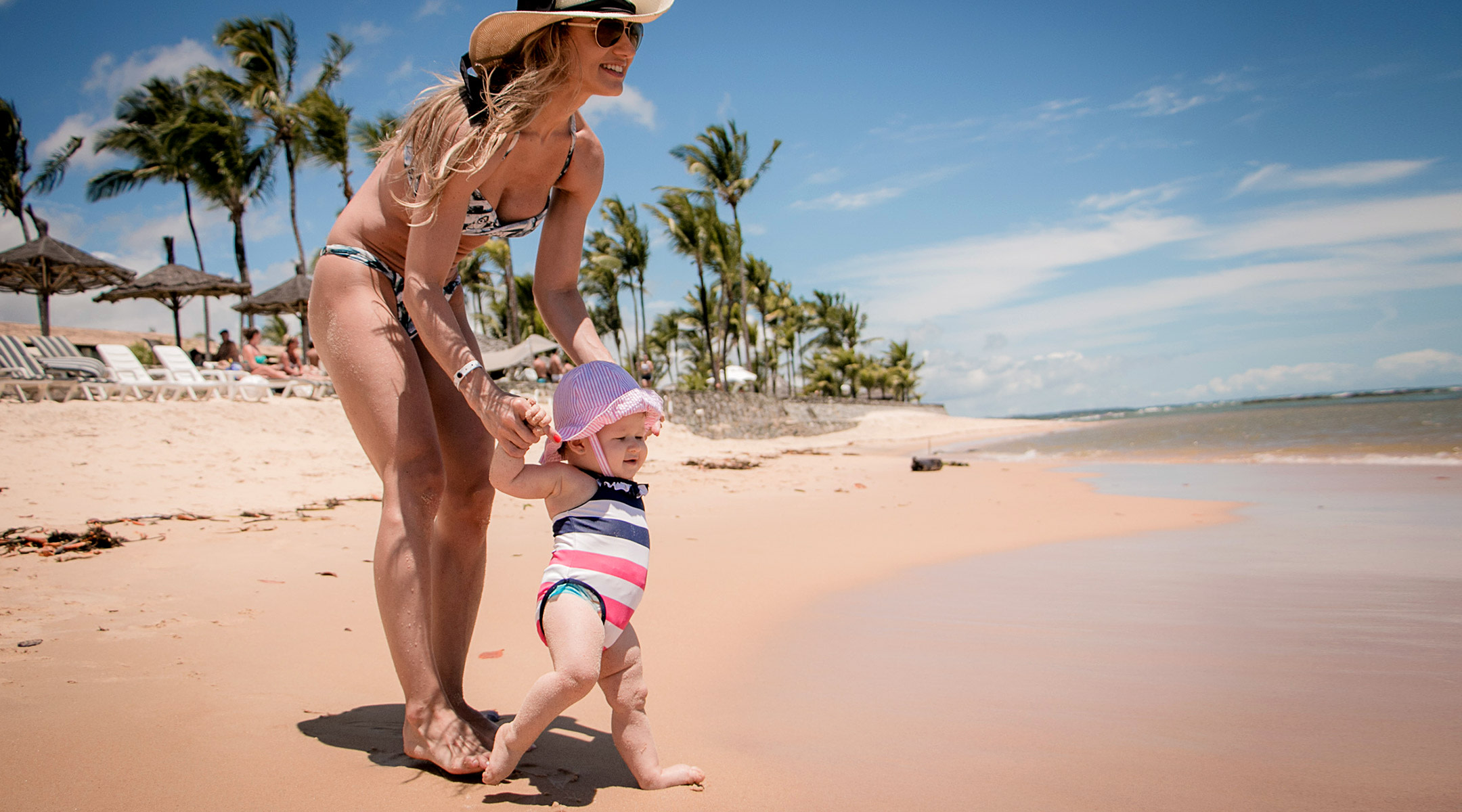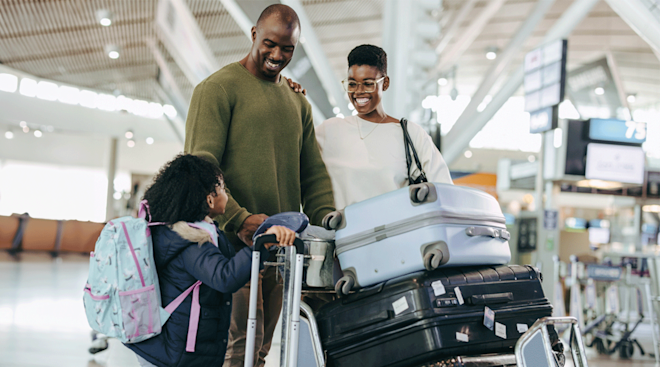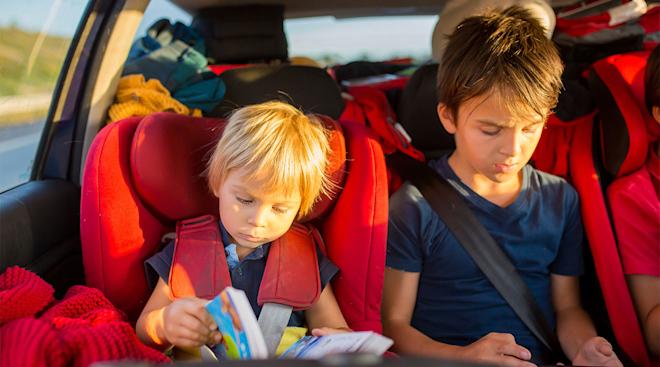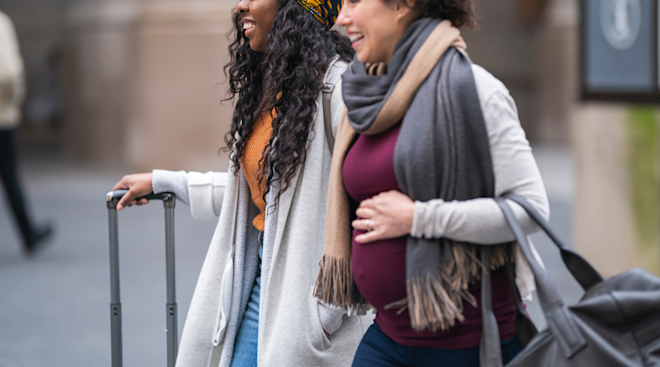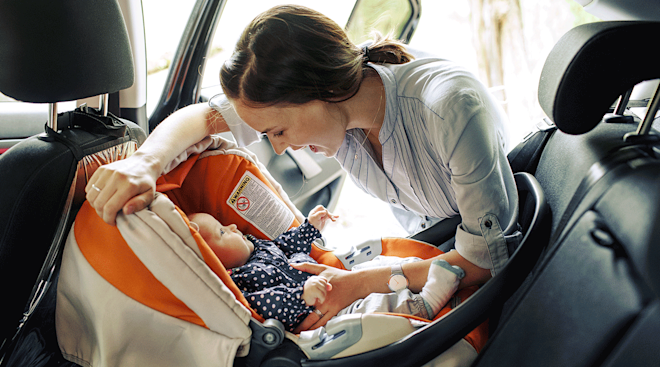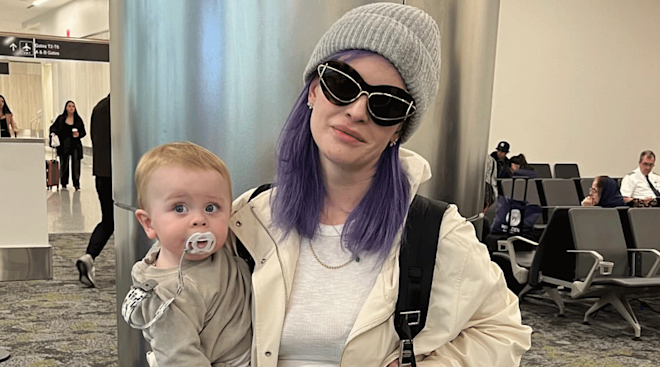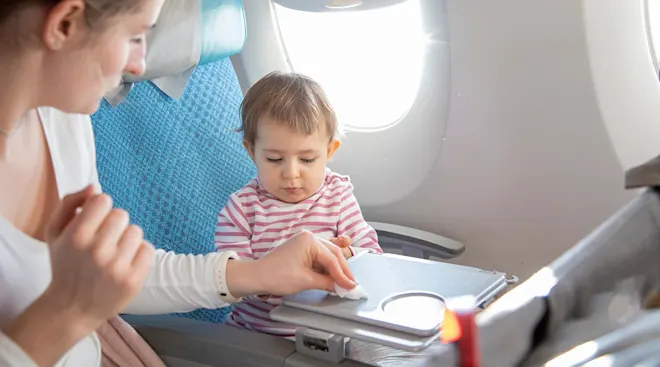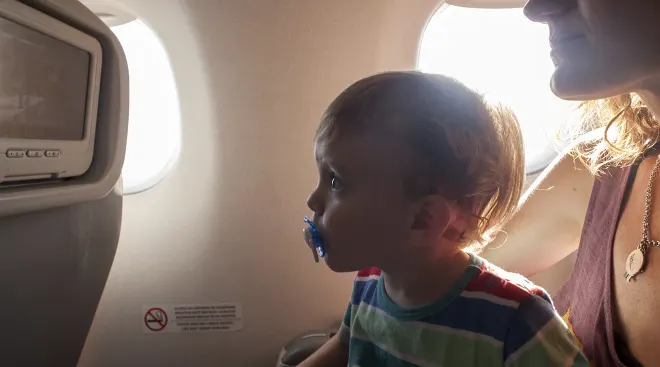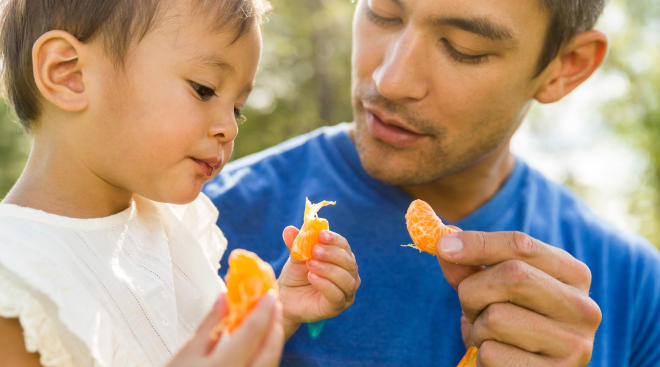What to Do if Baby Gets Sick While Traveling
Spending vacation time with your little one is always fun, but worrying about your child getting sick during your travels is not. Here are our top tips for what first aid items to pack and how to be prepared for a potential illness while traveling.
New parents often ask us, “when can I travel with my newborn?” Most pediatricians feel more comfortable giving parents the okay to bring a baby on a plane once they’re 2 months old, since a fever (a rectal reading of 100.4 degrees Farhenheit and above) in a baby under 2 months old calls for an automatic trip to the emergency room. Talk to your pediatrician about whether it’s safe to travel if your child has certain medical conditions, such a heart or lung disease, is on medications that suppress the immune system, or is about to have or has recently had surgery.
You should also ask your pediatrician before your trip if there are any special considerations when traveling to certain destinations, such as presence of the Zika virus, a measles outbreak, potential rabies exposure in the area, the possibility of altitude sickness, tick-borne illnesses or other infectious diseases. A great resource to look at before picking a destination is the CDC travel website, which lists travel health notices for international destinations. It’ll tell you if certain vaccines or medications are recommended before you travel to an area and the level of health concerns for specific countries.
Here’s what we recommend packing in case your child gets sick:
- Any prescription medication your child is taking
- Infants’ Tylenol or Motrin (if baby is over 6 months old)
- Children’s Benadryl (if your child is over 2 years old)
- Hydrocortisone cream
- Antibacterial cream
- Thermometer
- Band-Aids
- Tweezers to remove splinters or ticks
- Electrolyte solution in case of a stomach bug (these come in single-serving powder packets that easier to travel with)
- Sunscreen
- Aloe to treat any sunburns
- Mosquito repellent
Make sure you know your child’s dosing for each medication you bring so you’re not searching for it in an area with little internet access. It may be helpful to bring a dosing syringe with you as well. If you’re flying, don’t forget to throw a few useful items in your carry-on bag, including hand sanitizer, Band-Aids and lollipops—they can help ease kids’ ear pain during landing and serve as a post-medicine treat.
Before you travel, research your destination and look up where to go in case of an emergency, and have emergency numbers on hand. It’s important to ask friends, family or your pediatrician, if possible, for places that provide pediatric care. If you’re traveling within the US, the AAP offers a list of pediatricians who are happy to see out-of-state patients.
If a pediatric office isn’t available near your destination, look for the closest pediatric urgent care center (rather than just an adult urgent care center) or a hospital with a pediatric emergency room. You can also always call your own pediatrician if your child becomes ill. They can often triage your child over the phone based on their symptoms and can advise you to either seek care immediately or wait it out until you return home.
Meet Dina DiMaggio, MD, and Anthony F. Porto, MD, MPH, official spokespeople for the American Academy of Pediatrics and the co-authors of The Pediatrician’s Guide to Feeding Babies and Toddlers. They write about the latest AAP guidelines, studies and seasonal issues affecting babies and toddlers. Follow them on Instagram @pediatriciansguide.
Published July 2019
Navigate forward to interact with the calendar and select a date. Press the question mark key to get the keyboard shortcuts for changing dates.
































